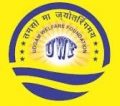Practice IELTS Reading Test Online With Answer Key
Taking an IELTS Reading Test Online With Answer Key is one of the best ways to evaluate your reading ability before the actual exam. It allows you to understand question types, identify common traps, and learn how to find answers efficiently in passages. Practicing with an answer key helps you compare your performance and analyze mistakes effectively.
Enhance Accuracy and Time Management
The IELTS reading section demands both accuracy and speed. By using a reading test online with answer key, you can practice under timed conditions and improve your comprehension skills. It also helps you familiarize yourself with headings, true/false/not given, and matching information questions—key components of the IELTS test.
Boost Confidence for IELTS Success
Regular practice builds confidence and reduces exam anxiety. Each session with the IELTS Reading Test Online With Answer Key offers immediate feedback and strengthens your understanding of English academic vocabulary. Therefore, consistent practice remains essential for achieving a higher band score in the IELTS reading module.
IELTS Academic Reading: Passage 2
Reading Passage 2: The Internet of Things (IoT): A Connected World
Paragraph 1
The Internet of Things (IoT) describes the vast network of physical objects embedded with sensors, software, and other technologies for the purpose of connecting and exchanging data with other systems and devices over the internet. This interconnected ecosystem represents a fundamental shift in how people interact with technology, moving from active computer use to a world where ubiquitous, passive data collection and automated responses are the norm. The rapid expansion of IoT is driven by the decreasing cost of connectivity and microprocessors, leading analysts to predict trillions of dollars in **economic value** derived from optimization and efficiency gains across various global markets.
Paragraph 2
The operation of a typical IoT system relies on a continuous loop involving four essential stages. First, **sensors** gather data from the physical environment, measuring everything from temperature and light to vibrations and motion. This raw information is then transmitted via various network protocols—including cellular, Wi-Fi, or proprietary low-power options—to a centralised processing system, often located in the **cloud**. Here, the data is processed, analysed, and acted upon using complex algorithms. The final stage involves **actuators**, which are mechanisms that translate the digital command back into a physical action, such as adjusting a thermostat or locking a door.
Paragraph 3
The versatility of IoT allows for diverse applications across multiple sectors. In the consumer sphere, “smart homes” utilise interconnected appliances for automated lighting, security, and climate control, primarily benefiting **efficiency** and **personal safety**. More significantly, the Industrial Internet of Things (IIoT) is transforming sectors like manufacturing and energy production. By deploying sensors on machinery, companies can engage in **predictive maintenance**, a strategic capability that enables the detection of potential equipment failure long before it occurs. This, in turn, dramatically reduces unplanned downtime and associated operational costs.
Paragraph 4
Despite the enormous benefits, two major issues continue to hinder widespread adoption. The foremost concern is **security**, as every new connected device represents a potential vulnerability and entry point for cyberattacks. A breach in one device can potentially compromise the entire network. Secondly, the sheer volume of data generated by billions of sensors presents a significant **data management** challenge. Organisations must develop **robust, scalable** platforms to store, analyse, and extract meaningful insights from the constant deluge of information, necessitating new approaches to cloud computing and **edge processing**.
Test Results
Correct Answers: 0
Incorrect Answers: 0
Percentage Score: 0%

